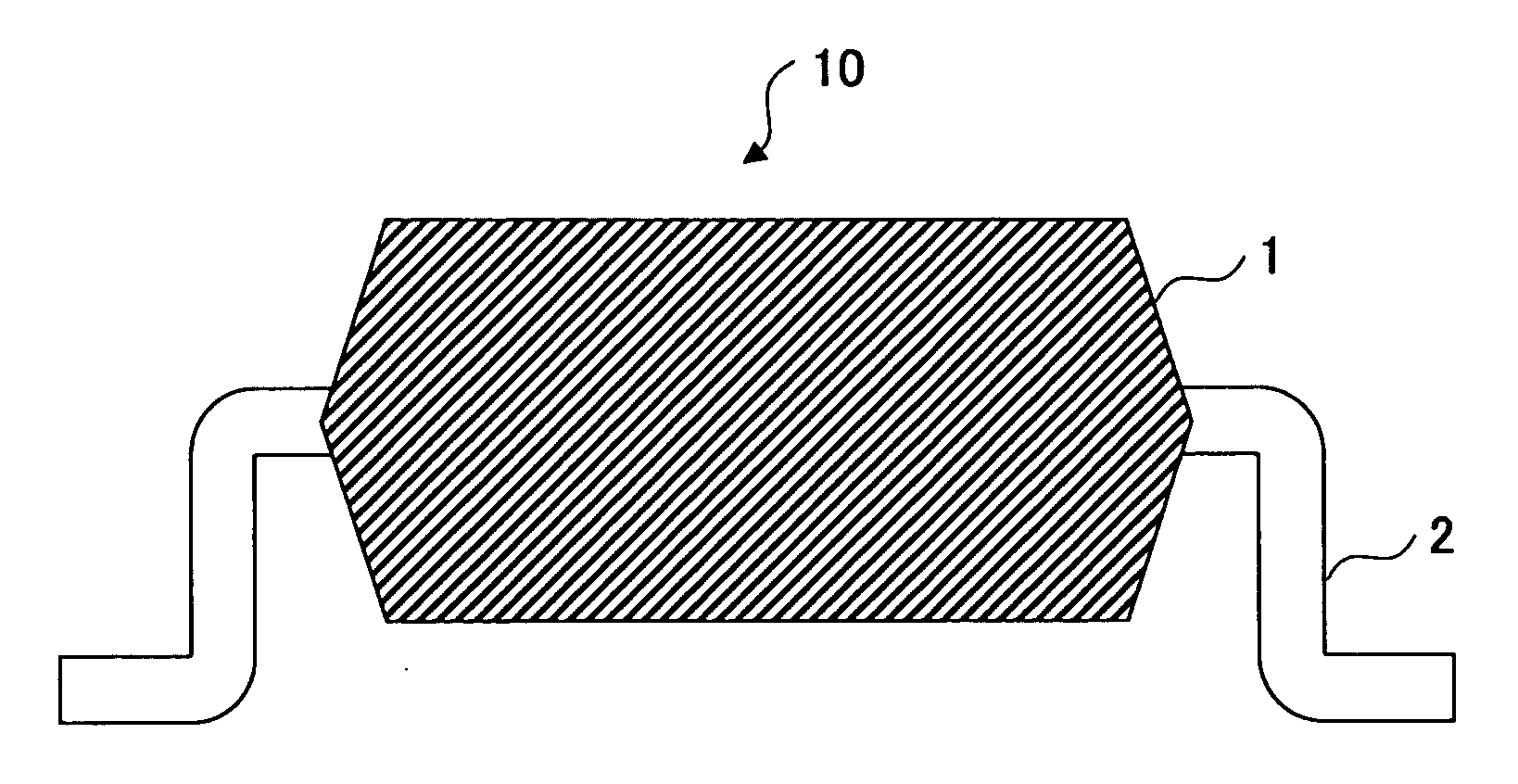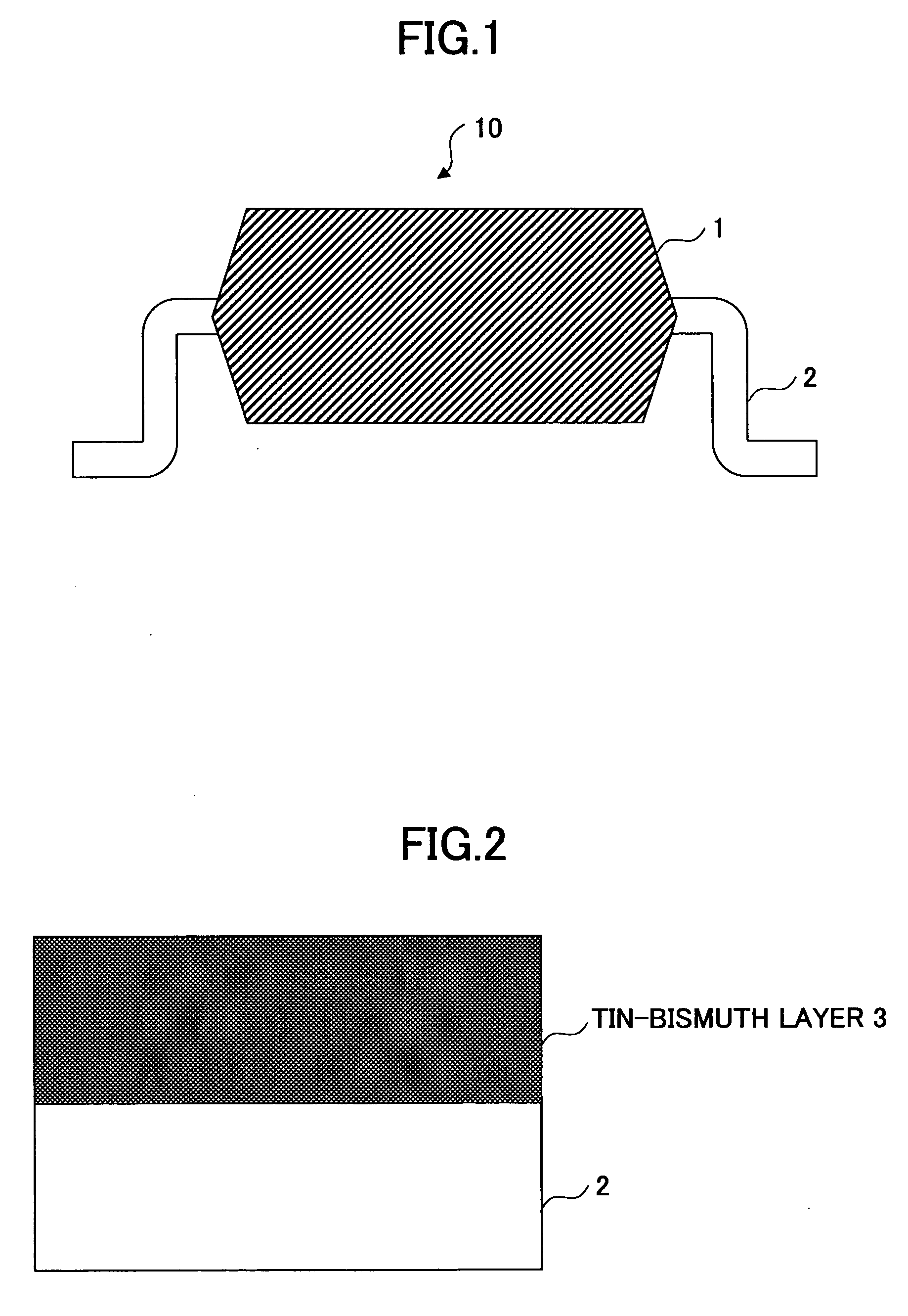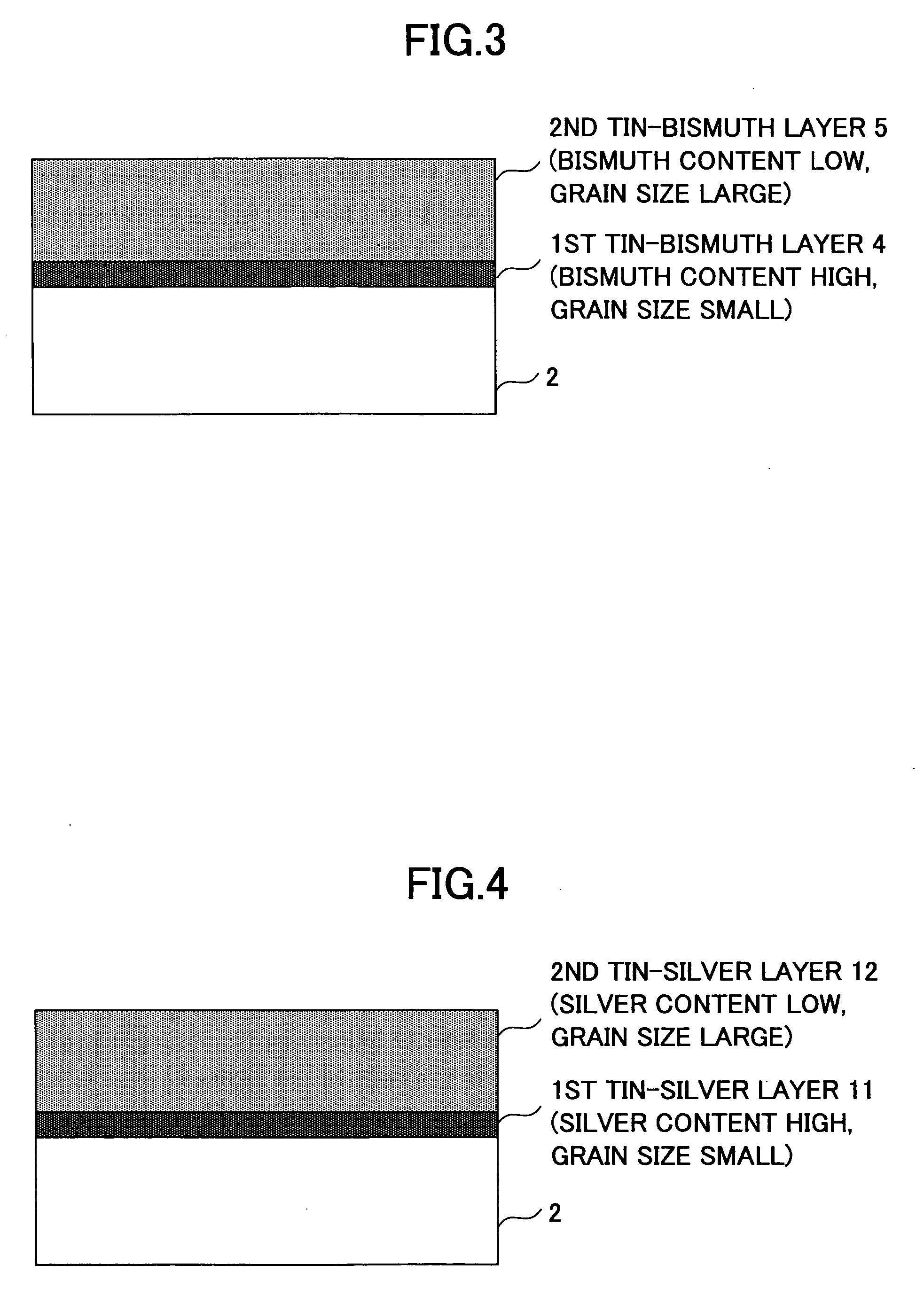Semiconductor device using multi-layer unleaded metal plating, and method of manufacturing the same
a technology of unleaded metal and semiconductors, which is applied in the direction of semiconductor devices, semiconductor/solid-state device details, electrical equipment, etc., can solve the problems of whisker resistance left behind, the anxiety of the influence of lead or lead alloy on the human body, and the problem of groundwater contamination, etc., to achieve the effect of reducing the area of the crevice between the particles, reducing the absolute quantity of residual stress between the particles, and improving whisker resistan
- Summary
- Abstract
- Description
- Claims
- Application Information
AI Technical Summary
Benefits of technology
Problems solved by technology
Method used
Image
Examples
Embodiment Construction
[0056] A description will now be given of the preferred embodiments of the present invention with reference to the accompanying drawings.
[0057]FIG. 1 shows the composition of a semiconductor integrated circuit device in which the semiconductor device according to the invention is embodied. FIG. 3 is a cross-sectional view showing the composition of an example of the multi-layer unleaded metal plating layers formed on the lead of the semiconductor integrated circuit device of FIG. 1 using the multi-layer unleaded metal-plating method in the first preferred embodiment of the invention.
[0058] The multi-layer unleaded metal-plating method of the present embodiment is the method which forms the two different unleaded tin-alloy plating layers (which is inclusive of a 100% tin plating layer) on the base material of the lead as the inner layer and the surface layer.
[0059] The semiconductor integrated circuit device 10 of FIG. 1 comprises the IC package 1, and the lead 2 which is an exter...
PUM
| Property | Measurement | Unit |
|---|---|---|
| grain size | aaaaa | aaaaa |
| grain size | aaaaa | aaaaa |
| thickness | aaaaa | aaaaa |
Abstract
Description
Claims
Application Information
 Login to View More
Login to View More - R&D
- Intellectual Property
- Life Sciences
- Materials
- Tech Scout
- Unparalleled Data Quality
- Higher Quality Content
- 60% Fewer Hallucinations
Browse by: Latest US Patents, China's latest patents, Technical Efficacy Thesaurus, Application Domain, Technology Topic, Popular Technical Reports.
© 2025 PatSnap. All rights reserved.Legal|Privacy policy|Modern Slavery Act Transparency Statement|Sitemap|About US| Contact US: help@patsnap.com



